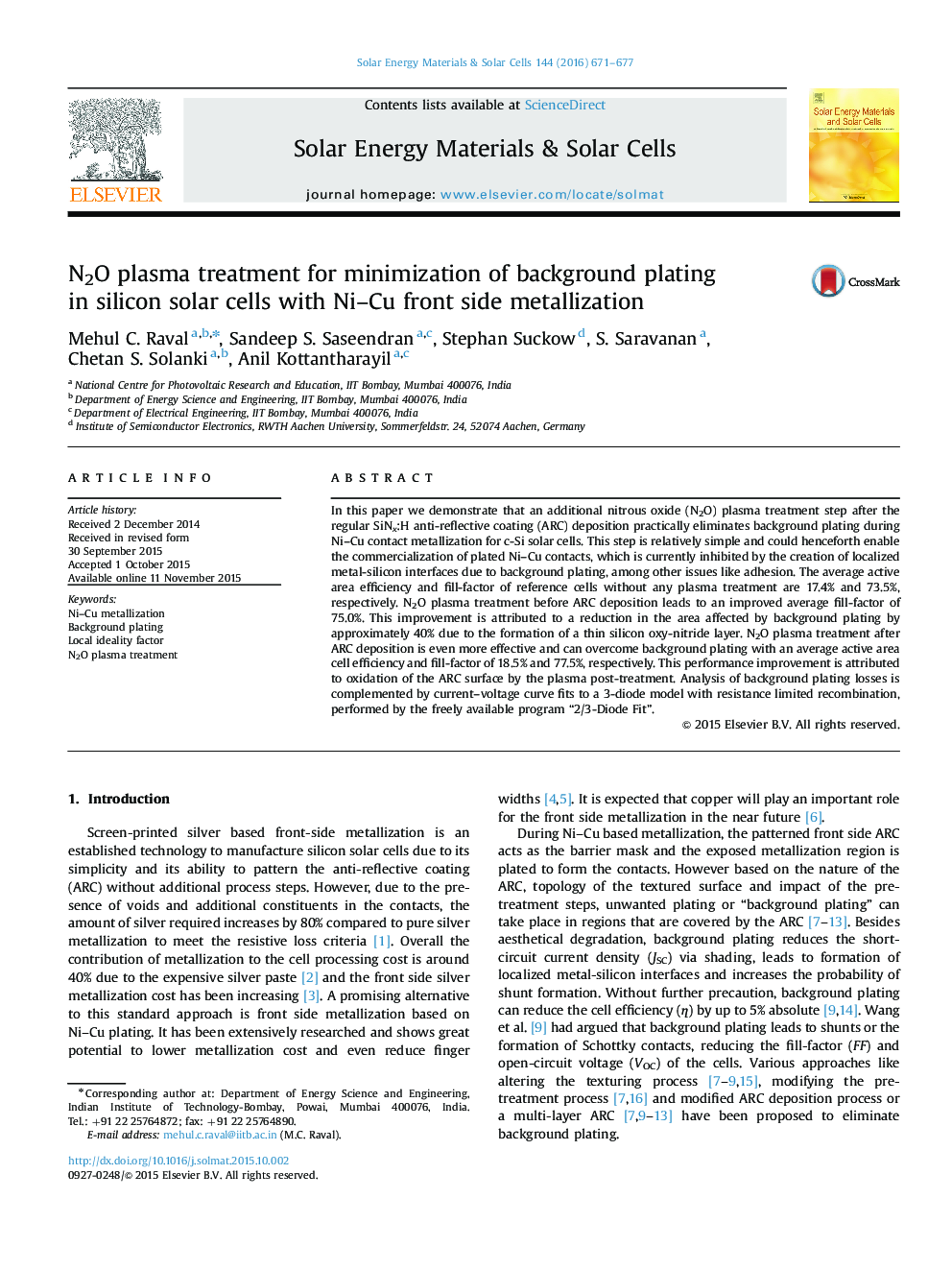| Article ID | Journal | Published Year | Pages | File Type |
|---|---|---|---|---|
| 6534978 | Solar Energy Materials and Solar Cells | 2016 | 7 Pages |
Abstract
In this paper we demonstrate that an additional nitrous oxide (N2O) plasma treatment step after the regular SiNx:H anti-reflective coating (ARC) deposition practically eliminates background plating during Ni-Cu contact metallization for c-Si solar cells. This step is relatively simple and could henceforth enable the commercialization of plated Ni-Cu contacts, which is currently inhibited by the creation of localized metal-silicon interfaces due to background plating, among other issues like adhesion. The average active area efficiency and fill-factor of reference cells without any plasma treatment are 17.4% and 73.5%, respectively. N2O plasma treatment before ARC deposition leads to an improved average fill-factor of 75.0%. This improvement is attributed to a reduction in the area affected by background plating by approximately 40% due to the formation of a thin silicon oxy-nitride layer. N2O plasma treatment after ARC deposition is even more effective and can overcome background plating with an average active area cell efficiency and fill-factor of 18.5% and 77.5%, respectively. This performance improvement is attributed to oxidation of the ARC surface by the plasma post-treatment. Analysis of background plating losses is complemented by current-voltage curve fits to a 3-diode model with resistance limited recombination, performed by the freely available program “2/3-Diode Fit”.
Keywords
Related Topics
Physical Sciences and Engineering
Chemical Engineering
Catalysis
Authors
Mehul C. Raval, Sandeep S. Saseendran, Stephan Suckow, S. Saravanan, Chetan S. Solanki, Anil Kottantharayil,
